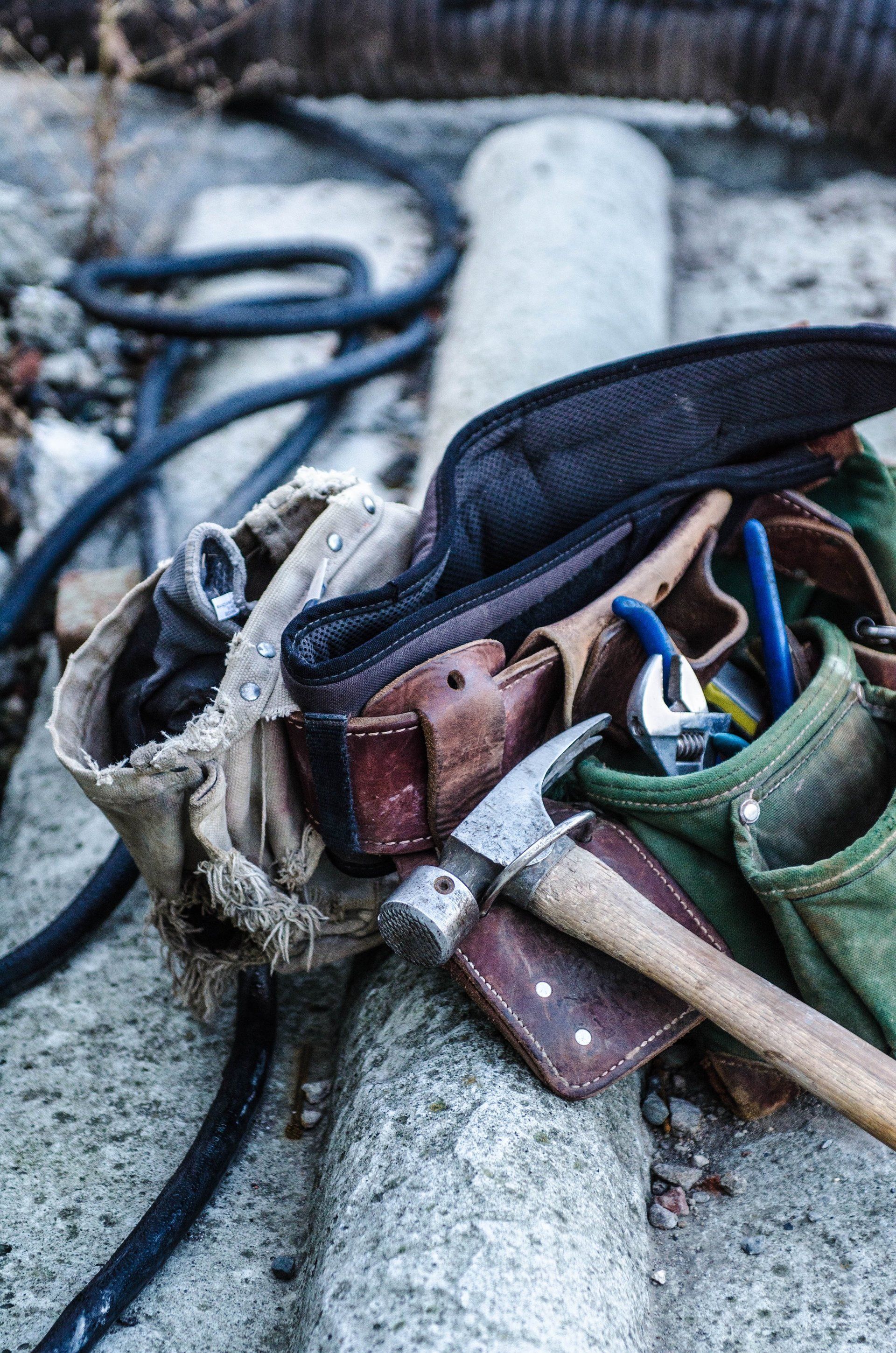Blog Layout
What is a Home Inspection
By Greg Genser, TREC Professional Inspector Lic. #2962Experience & Professionalism you can depend on since 1991
A home inspection will addresses the major components of the house including; foundation performance evaluation; grade & drainage; roof cover, roof structure & attic; interior & exterior walls, ceilings, floors, doors & windows; stairways; fireplace & chimney; balconies & porches; electrical system; HVAC system; plumbing system; water heating equipment; and appliances. Optional systems may include lawn irrigation system and swimming pool.
A home inspection for a buyer or seller is subject to the rules (Rules) of the Texas Real Estate Commission (TREC), which can be found at www.trec.texas.gov. The TREC Standards of Practice (Sections 535.227-535.233 of the Rules) are the minimum standards for inspections by TREC licensed inspectors. The inspection is NOT a code compliance inspection and does NOT verify compliance with manufacturer’s installation instructions. The inspection does NOT imply insurability or warrantability of the structure or its components. Although some safety issues may be addressed, an inspection is NOT a safety/code inspection, and the inspector is NOT required to identify all potential hazards.
The inspector will report if a condition exists that adversely and materially affects the performance of a system or component or constitutes a hazard to life, limb or property as specified by the TREC Standards of Practice. General deficiencies include inoperability, material distress, water penetration, damage, deterioration, missing components, and unsuitable installation. The inspector is not required to prioritize or emphasize the importance of one deficiency over another.
A property inspection is not a technically exhaustive inspection of the structure, systems or components. The inspection may not reveal all deficiencies. A real estate inspection helps to reduce some of the risk involved in purchasing a home, but it cannot eliminate these risks, nor can the inspection anticipate future events or changes in performance due to changes in use or occupancy. It is recommended that a home buyer obtain as much information as is available about the property, including any seller’s disclosures, previous inspection reports, engineering reports, building/remodeling permits, and reports performed for or by relocation companies, municipal inspection departments, lenders, insurers, and appraisers. A buyer should also attempt to determine whether repairs, renovation, remodeling, additions, or other such activities have taken place at the property. It is not the inspector’s responsibility to confirm that information obtained from these sources is complete or accurate or that the inspection is consistent with the opinions expressed in previous or future reports.
Items identified in a Property Inspection Report do not obligate any party to make repairs or take other actions, nor is the purchaser required to request that the seller take any action. When a deficiency is reported, it is the client’s responsibility to obtain further evaluations and/or cost estimates from qualified service professionals. Any such follow-up should take place prior to the expiration of any time limitations such as option periods. Evaluations by qualified tradesmen may lead to the discovery of additional deficiencies which may involve additional repair costs. Failure to address deficiencies or comments from an inspector may lead to further damage of the structure or systems and add to the original repair costs.
Text provided courtesy of the Property Inspection Report Promulgated by the Texas Real Estate Commission (TREC). REI 7-5.
Greg Genser, owner of Cypress Inspections is a Texas Real Estate Commission (TREC) licensed Professional Real Estate Inspector #2962, International Code Council (ICC) Residential Combination Inspector #5186780-R5 and a Texas Master Electrician (TMEL) #12817. Visit www.cypressinspections.com for additional information.
The body content of your post goes here. To edit this text, click on it and delete this default text and start typing your own or paste your own from a different source.
You might also like

15 Nov, 2019
You purchased a beautiful lamp for the family room and realize the power supply cord does not reach a receptacle outlet. How about a kitchen appliance? You set an appliance at the desired location and a receptacle outlet is not within reach of the power supply cord. Sometimes an extension cord then becomes necessary and without giving it any thought, you have just created a home safety hazard for you and your family. The need for an extension cord in these scenarios should not have been necessary. Why, because a receptacle outlet should have been installed within reach of the appliance/fixture power supply cord. An extension cord is intended as a temporary, not permanent wiring method. Based upon the National Electric Code (NEC), locations that receptacle outlets are required include; Receptacles shall be installed so that no point along the floor line in any wall space is more than 6 feet, measured horizontally, from an outlet in that space. In kitchens, receptacle outlets shall be installed at each wall counter space that is 12 inches or wider. Receptacle outlets shall be installed so that no point along the wall line is more than 24 inches, measured horizontally from a receptacle outlet in that space. At least one receptacle outlet shall be installed at each island counter top space and at each peninsula counter top space. At least one wall receptacle outlet shall be installed in bathrooms within 36 inches of the outside edge of each basin. At least one outdoor receptacle outlet shall be accessible at grade level at the front and back of the dwelling. One receptacle outlet shall be installed for the laundry, at least one for each car space in a garage and one in hallways of 10 feet or more in length. The U.S. Consumer Product Safety Commission (CPSC) estimates that each year, about 4,000 injuries associated with extension cords are treated in emergency rooms. About half the injuries involve fractures, lacerations, contusions, or sprains from people tripping over extension cords. Thirteen percent of the injuries involve children under-five years of age; electrical burns to the mouth accounted for half the injuries to young children. CPSC also estimates that about 3,300 residential fires originate in extension cords each year, killing 50 people and injuring about 270 others. The most frequent causes of such fires are short circuits, overloading, damage, and/or misuse of extension cords. If you must use an extension cord, please follow the guidelines outlined in CPSC document #16 and be extremely careful! Greg Genser, owner of Cypress Inspections is a Texas Real Estate Commission (TREC) licensed Professional Real Estate Inspector #2962, International Code Council (ICC) Residential Combination Inspector #5186780-R5 and a Texas Master Electrician (TMEL) #12817. Visit www.cypressinspections.com for additional information.

15 Nov, 2019
When performing a Property Inspection for a home buyer or seller, the Texas Real Estate Commission (TREC) Standards of Practice requires an Inspector or Professional Inspector to render a written opinion as to the performance of the foundation and generally report present and visible indications used to render the opinion of adverse performance such as; binding, out-of-square doors; framing or frieze board separations; sloping floors; window, wall, floor or ceiling cracks or separations; rotating, buckling, cracking or deflecting masonry cladding. Does one 6-inch long interior sheetrock wall crack with no nominal separation, a brick cladding mortar joint crack with no nominal separation, an uneven door frame or a minor floor slope constitute adverse foundation performance? Maybe the interior sheetrock crack is due to wall stud shrinkage; the brick cladding mortar crack is due to poor mortar bonding; an uneven door frame due to poor craftsmanship; and a floor slope occurred when the concrete was set-in-place. Without performing a soils test, in general soils in the greater Houston area are expansive soils. Foundations are required to be engineered based on the foundation design for expansive soils of the International Building Code (IBC), Chapter 18, Section 1805 that states; Footings or foundations placed on or within the active zone of expansive soils shall be designed to resist differential volume changes and to prevent structural damage to the supported structure. Deflection and racking of the supported structure shall be limited to that which will not interfere with the usability and serviceability of the structure. Foundations placed below where volume change occurs or below expansive soil shall comply with the following provisions: 1. Foundations extending into or penetrating expansive soils shall be designed to prevent uplift of the supported structure. 2. Foundations penetrating expansive soils shall be designed to resist forces exerted on the foundation due to soil volume changes or shall be isolated from the expansive soil. What does this mean? Per IBC Chapter 18, Section 1805 foundation movement can occur and cause cracking to interior and exterior walls, so as “to prevent structural damage to the supported structure.” Keep in mind that interior sheetrock and exterior claddings are not structural. Structural damage would be to the wood frame (most common form of construction in the greater Houston area). “Deflection and racking of the supported structure shall be limited to that which will not interfere with the usability and serviceability of the structure.” I interpret “usability and serviceability of the structure” as capable of opening all doors and window frames without binding or walking across the foundation floor without feeling like it has a down-hill slope or bulge that would effect usability or cause a trip hazard. Too often an Inspector or Professional Inspector observes one or more deficiencies and recommends client consult a Structural Engineer without reporting their professional opinion of foundation performance; an opinion which is required by TREC. Hiring an experienced Professional Inspector to evaluate the foundation performance can give you peace of mind and save you money. Greg Genser, owner of Cypress Inspections is a Texas Real Estate Commission (TREC) licensed Professional Real Estate Inspector #2962, International Code Council (ICC) Residential Combination Inspector #5186780-R5 and a Texas Master Electrician (TMEL) #12817. Visit www.cypressinspections.com for additional information.

15 Nov, 2019
I have been a licensed Professional Real Estate Inspector since 1991 and in all my years of experience I have observed only a handful of homes that have had a proper and secure swimming pool barrier installed. Anyone who owns a swimming pool; has intentions of installing a pool, purchasing a home with a swimming pool, or visit a home with a swimming pool should become more knowledgeable about swimming pool barrier safety. Most people do not have access to International Residential Code (IRC) Appendix G; however, to become more educated, persons should view Consumer Product Safety Commission (CPSC) publication #362 for an interpretation of the IRC, Appendix G. It could save the life of a loved-one. CPSC has estimated that each year about 300 children under age 5 years old drown in swimming pools. The Commission estimates that hospital emergency treatment is required for more than 2,000 children under 5 years of age who were submerged in residential pools. A brief summary of CPSC document #362 and IRC Appendix G; All barriers should be at least 48 inches high, no space at the bottom of the barrier should be greater than 4 inches, an object 4 inches in diameter should not be allowed to pass through the barrier and there shall be no ladder effect within the barrier. Gates accessing the area should open outward, be equipped to accommodate a locking device and be self-closing and self-latching. Where a release mechanism for the self-latching device is located less than 54” from the bottom of the gate, the mechanism should be located on the poolside of the gate at least 3” below the top and there shall be no openings provided in the gate to access the mechanism. When part of the dwelling serves as the barrier, all doors accessing the pool area should be equipped with a 30 second audible alarm, be self-closing and self-latching or a powered safety cover should be provided across the swimming pool. For above ground pools, the steps or ladder can be designed to be secured, locked or removed to prevent access, or the steps or ladder can be surrounded by a barrier such as described above. Most houses that I inspect which have a swimming pool usually have a 6-foot privacy wood fence for the backyard but the gates and doors leading to the pool area are not installed in an approved manner and there is never an indoor audible alarm on exterior doors to alert residents of the possibility of an unsupervised child wondering from the residence into the pool area. A proper and safe swimming pool barrier prevents a child from getting over, under, or through and keeps the child from gaining access to the pool except when supervising adults are present. Greg Genser, owner of Cypress Inspections is a Texas Real Estate Commission (TREC) licensed Professional Real Estate Inspector #2962, International Code Council (ICC) Residential Combination Inspector #5186780-R5 and a Texas Master Electrician (TMEL) #12817. Visit www.cypressinspections.com for additional information.
Book a Service Today
Thank you for contacting us.
We will get back to you as soon as possible
We will get back to you as soon as possible
Oops, there was an error sending your message.
Please try again later
Please try again later
Contact Us
Professional Real Estate Inspection in Houston, Cypress, Spring and surrounding areas.
Navigation
Email
gtg@cypressinspections.com
Location
2285, 12714 New Cypress Dr, Cypress, Texas 77429, United States
Service Areas in Texas
Houston, Cypress, Spring, Katy, Tomball, The Woodlands, Conroe, Kingwood, Humble, Fulshear, and Magnolia.